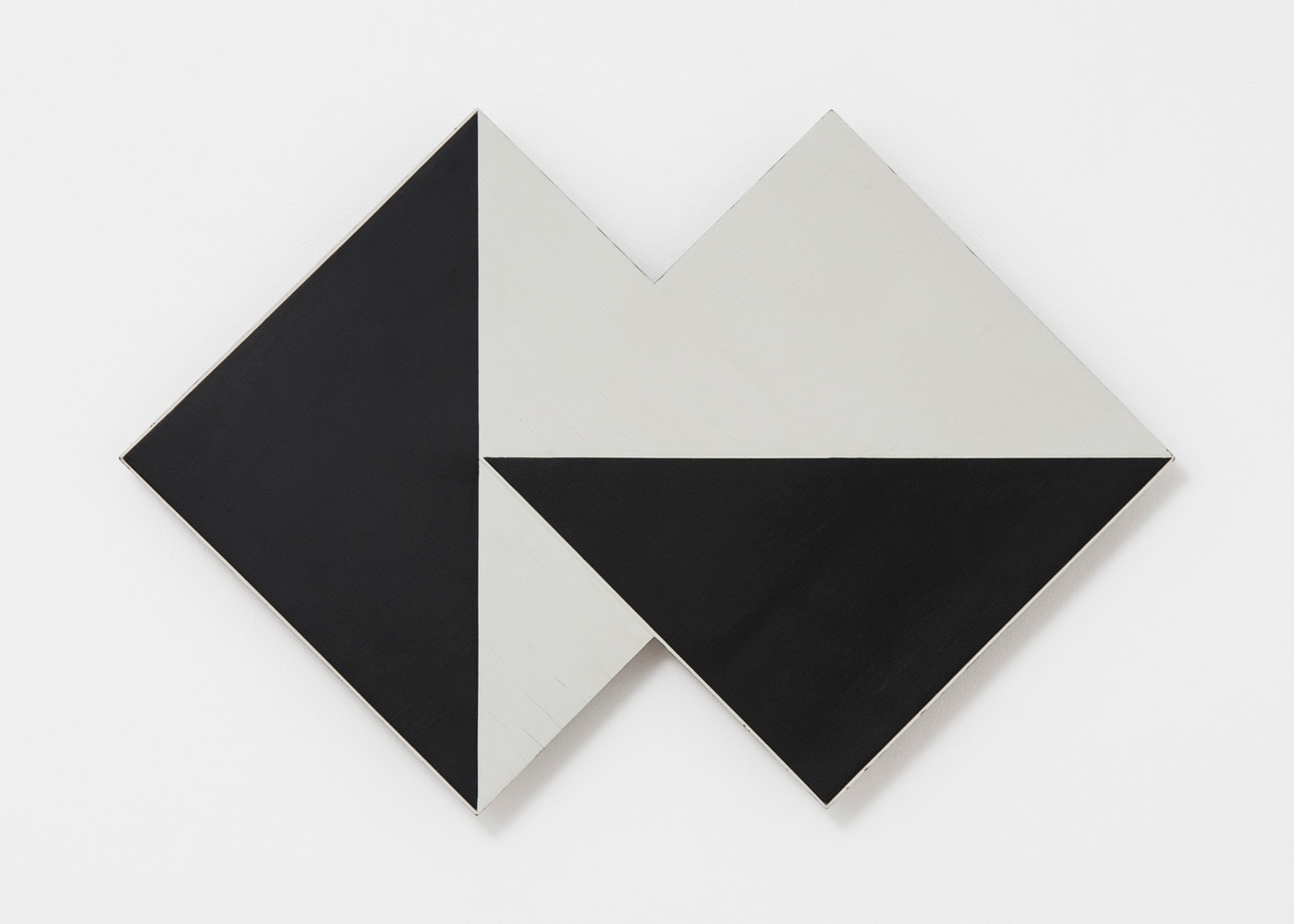


Lygia Clark
Superficie Modulada / Modulated Surface, 1958/1984
Industrial ink on wood
42 x 63 cm, 16 1/2 x 24 3/4 in
© Associação Cultural O Mundo de Lygia Clark
Further images
Extract from 'Lygia Clark: Estudos E Maquette' exhibition press release, 2010: The earliest works in the exhibition, a series of works on paper in the Concretist tradition, illustrate the indebtedness...
Extract from "Lygia Clark: Estudos E Maquette" exhibition press release, 2010:
The earliest works in the exhibition, a series of works on paper in the Concretist tradition, illustrate the indebtedness of Clark’s early practice to the abstract traditions of Modernism that had come to be assimilated into Brazilian culture in the 1940s. Lygia Clark began making art in 1947, and the early drawings and gouaches reveal a growing confidence and the beginnings of her interrogation of geometric abstraction as a viable, meaningful aesthetic. Two graphite and gouache works from 1952, from the Planos em Superficie Modulada (Modulated Surface Planes) series, represent the artist’s original investigations into the interplay between line and colour in the construction of pictorial space, yet as this series progressed the works became bolder, simpler and more radical in their composition.
The later wall-based works, beginning with the 1954 unique collage Quebra da Moldura (Breaking the Frame), evince a growing dissatisfaction with the conventions of Concretism, the heir to European neo-plasticism, with the inviolate flatness and containment of the work that this tradition entailed. Clark’s frustration grew as the Planos em Superficie Modulada developed, and by 1958 they had become chromatically starker, often monochrome collages of card and wood, as Clark became convinced that optical ingenuity was not enough to bridge the gulf between artwork and viewer that she had come to believe was imperative. Finally in 1959 Clark felt she had reached the limits of classical geometric abstraction as she entered a new, vital phase of her career. As she wrote in 1960, ‘the plane arbitrarily marks off the limits of a space, giving humanity an entirely false and rational idea of its own reality. From this are derived the opposing concepts of high and low, front and back – exactly what contributes to the destruction in humankind of the feeling of wholeness…The square took on a magical meaning when the artist understood it as carrying a total vision of the universe. But the plane is dead.’ "
The earliest works in the exhibition, a series of works on paper in the Concretist tradition, illustrate the indebtedness of Clark’s early practice to the abstract traditions of Modernism that had come to be assimilated into Brazilian culture in the 1940s. Lygia Clark began making art in 1947, and the early drawings and gouaches reveal a growing confidence and the beginnings of her interrogation of geometric abstraction as a viable, meaningful aesthetic. Two graphite and gouache works from 1952, from the Planos em Superficie Modulada (Modulated Surface Planes) series, represent the artist’s original investigations into the interplay between line and colour in the construction of pictorial space, yet as this series progressed the works became bolder, simpler and more radical in their composition.
The later wall-based works, beginning with the 1954 unique collage Quebra da Moldura (Breaking the Frame), evince a growing dissatisfaction with the conventions of Concretism, the heir to European neo-plasticism, with the inviolate flatness and containment of the work that this tradition entailed. Clark’s frustration grew as the Planos em Superficie Modulada developed, and by 1958 they had become chromatically starker, often monochrome collages of card and wood, as Clark became convinced that optical ingenuity was not enough to bridge the gulf between artwork and viewer that she had come to believe was imperative. Finally in 1959 Clark felt she had reached the limits of classical geometric abstraction as she entered a new, vital phase of her career. As she wrote in 1960, ‘the plane arbitrarily marks off the limits of a space, giving humanity an entirely false and rational idea of its own reality. From this are derived the opposing concepts of high and low, front and back – exactly what contributes to the destruction in humankind of the feeling of wholeness…The square took on a magical meaning when the artist understood it as carrying a total vision of the universe. But the plane is dead.’ "
Provenance
The Artist
Estate of Lygia Clark
Exhibitions
Lygia Clark: Retrospective, Neue Nationalgalerie, Berlin, Germany, 23 May - 12 October 2025; traveling to Kunsthaus Zürich, Switzerland, 14 November 2025 - 8 March 2026Lygia Clark: The I and the You, Whitechapel Gallery, London, UK, 2 October 2024 - 12 January 2025
Lygia Clark. Painting as an Experimental Field, 1948 - 1958, Guggenheim Museum Bilbao, Spain, 6 March - 24 May 2020
Publications
Kersting, Rita. The Shadow of Color. Exhibition Catalogue. The Israel Museum: Tel Aviv, 2016, p. 91.Lygia Clark. Painting as an Experimental Field, 1948 - 1958. Exhibition Catalogue, Bilbao: Guggenheim Museum Bilbao, 2020, illustrated in colour, p. 138


